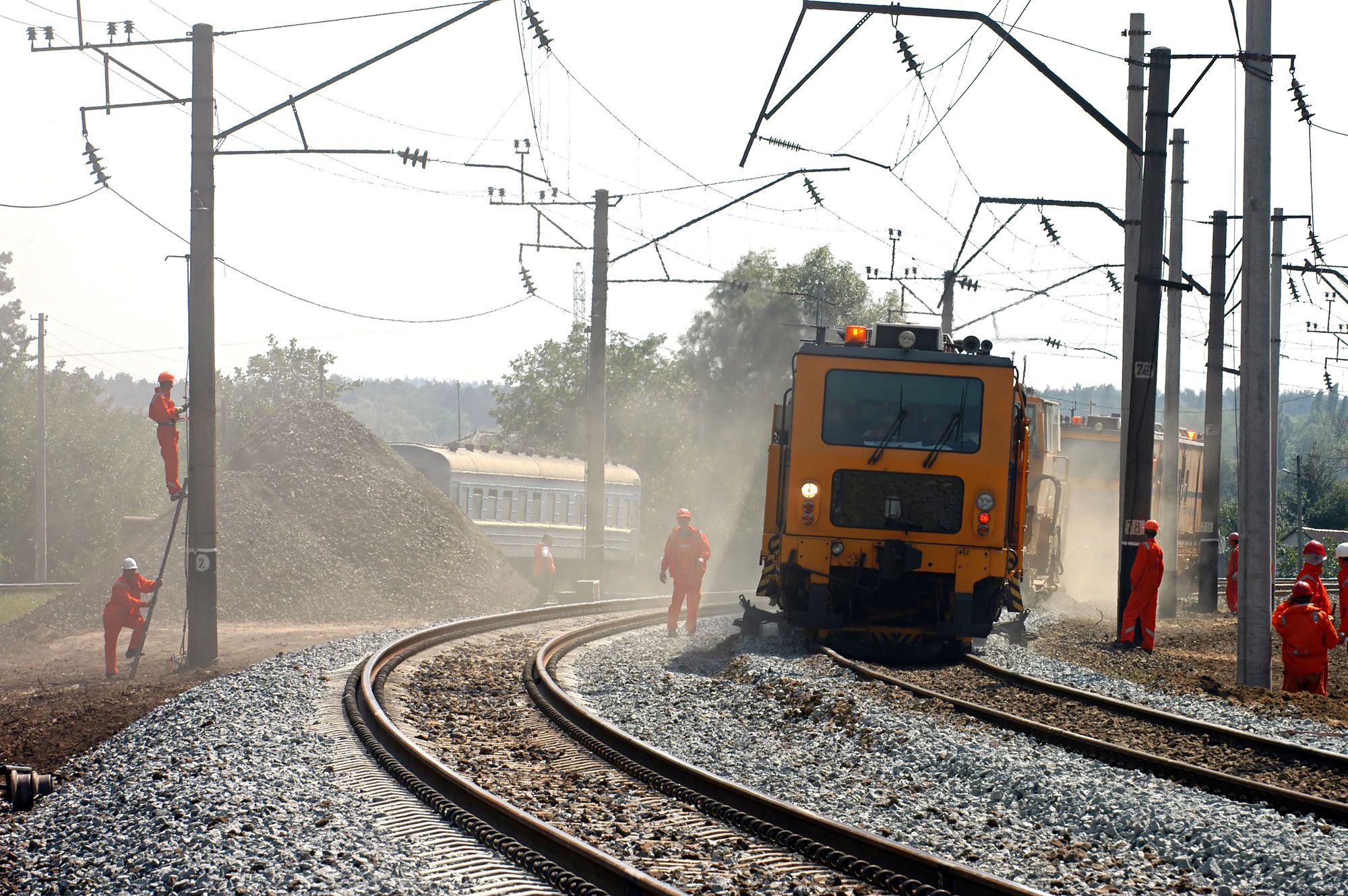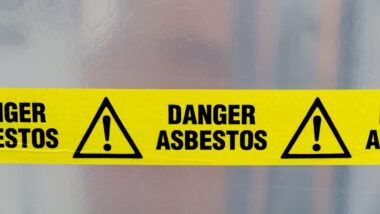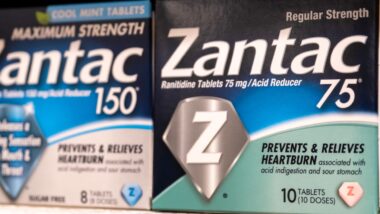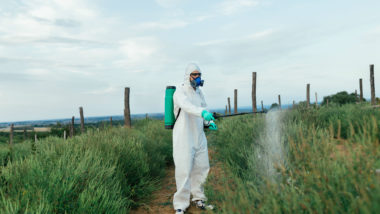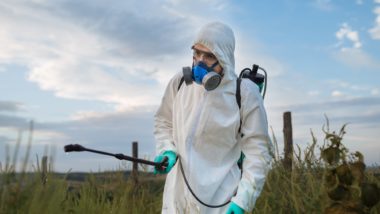Top Class Actions’s website and social media posts use affiliate links. If you make a purchase using such links, we may receive a commission, but it will not result in any additional charges to you. Please review our Affiliate Link Disclosure for more information.
Exposure to creosote has been linked to several types of cancer, including skin cancer and cancer of the scrotum, and is often tied to railroad workers cancer lawsuits.
What is Creosote?
According to the U.S. Environmental Protection Agency (EPA), creosote is a wood preservative made from the distillation of tar from wood or coal. This chemical is commonly seen on treated wood products such as utility poles or railroad ties. Creosote may also be used as an active ingredient in pesticide products used to protect wood from bugs, which can degrade the wood and threaten its integrity. This includes pests such as termites, fungi, mites, and more.
Creosote has been used since the mid-1800s and is applied to wood in special wood preserving facilities where certified applicators use high pressure equipment to apply the chemical. Creosote has been banned for widespread consumer use due to its potentially hazardous side effects; however, workers in certain commercial industries may continue to be exposed to this chemical substance in the workplace.
What Cancers Can Exposure to Creosote Cause?
In the short term, creosote vapors can result in respiratory tract irritation. If ingested, it can reportedly lead to burning pain in the mouth and throat along with stomach pain. Some herbal remedies may contain creosote bush leaves which, according to the Agency for Toxic Substances & Disease Registry, have been linked to liver damage.
Exposure to creosote for a year or longer, via skin or air contact, can cause blistering or peeling of the skin, even at low levels.
Unfortunately, long-term exposure to creosote is associated with the development of cancer. The U.S. Centers for Disease Control and Prevention (CDC) notes that creosote exposure can lead to skin cancer and cancer of the scrotum. Skin cancer is much more common, but scrotum cancer has been recorded in chimney sweeps.
The National Institutes of Health published the results of a study showing that as early as 1992, researchers noted that certain occupations may be at a higher risk of creosote exposure and subsequent cancer. Swedish researchers noted that workers exposed to creosote were shown to develop lip cancer, skin cancer, and malignant lymphoma.
“The findings indicate that impregnating wood with creosote in earlier decades increased the risk of skin cancer,” the researchers wrote.
The risks continue to be noted today, leading the International Agency for Research on Cancer (IARC) to classify creosote as probable human carcinogen.
Who is Exposed to Creosote?
Consumers may be exposed to creosote in their daily life if they consume herbal remedies using leaves from the creosote bush, live in a wood- treated house resulting in creosote contact through the air or skin or by drinking water that has been contaminated with creosote. However, it is unlikely that the general public will be exposed to the chemical in these ways.
It is far more likely that individuals will be exposed to creosote during the course of their job, like railroad workers.
In the past, chimney sweeps were commonly exposed to creosote in coal and coal tar. With the decline of this profession, these risks became less common. More recently, people working in wood preservation, coke-production, or asphalt industries may come into contact with the chemical.
Those who do more physical labor, such as installing telephone poles or building fences, bridges, and railroad tracks, may also come into contact with it. Many of the wood products used in these occupations are treated with the chemical, resulting in exposure to creosote and the associated health risks.
In some cases, people can encounter creosote outside of their professions. Railway companies can affect the lives of both workers and their communities. In Houston, residents sued a railway company for its alleged poor handling of creosote contamination which they say took a toll on the whole community.
RT&S reports that currently Union Pacific railway has been the focus of a creosote cancer lawsuit. Residents in the Houston area claim that cancer rates in their area are higher than average because of exposure to creosote, creating what is known as a “cancer cluster” in the area. Already, 500 residents have joined the creosote lawsuit against Union Pacific.
“Staff analyzed Texas Cancer Registry data available for a 17-year-period spanning from 2000 through 2016,” according to a report from the Texas Department of State Health Services. “Lung and bronchus, esophagus, and larynx cancers were statistically significantly greater than expected.”
The neighborhood, Kashmere Gardens, is one of the oldest and poorest neighborhoods in the Houston area. Around 35% of the families in Kashmere Gardens are living in poverty.
A link between these cancer diagnoses and the contamination from the railroad site has not been proven, but experts have indicated that the types of cancers the people of Kashmere Gardens are exhibiting at a high rate are consistent with exposure to creosote and other chemicals commonly found at railroad sites.
“The contaminants in the plume are linked to those specific cancers (found),” said Loren Hopkins, who serves as the chief environmental science officers for the Houston Health Department. “It was a very severe situation before (the cluster was found), and now it’s tragic.”
According to RT&S, a large amount of creosote has contaminated the ground around a former creosote site owned first by Southern Pacific and for the last 20 years owned by Union Pacific. Reportedly, Union Pacific is responsible for handling the body of creosote.
The residents claimed that Union Pacific was well aware that the creosote damaged property posed a cancer risk, and could possibly kill residents. Allegedly, however, the company concealed this knowledge, and misled the Texas Commissions on Environmental Quality about how severe and possibly damaging the creosote contamination was.

The company has taken steps to defend itself against the claims, and said to RT&S, “While Union Pacific sympathizes with the residents who are dealing with medical issues, we believe the lawsuit itself is baseless and plan to defend ourselves in court.”
Can I File a Lawsuit Over Railroad Creosote Exposure?
Companies, including railroad companies, are responsible for providing a safe work environment for their workers, as well as a proper safety equipment for when workers have to handle or be around unsafe materials.
Unfortunately, a growing number of railroad workers are coming forward saying that they were diagnosed with cancer because of exposure to dangerous chemicals while working on the railroad, such as creosote and benzene. A number of different cancer types have been linked with railroad worker exposure to chemicals, such as lung cancer, mesothelioma, Non-Hodgkin’s lymphoma, and more. A more complete list of potential railroad cancers can be found on our investigation page.
Companies can be held liable under the Federal Employers Liability Act (FELA) for injuries that occur while working on the railroad. Most injury claims sustained by railroad workers on the job should be filed under FELA, either in state or federal court. It is the responsibility of the plaintiff to prove the fault or negligence of the railroad company leading to the injury or injuries in question.
If you or someone you love was diagnosed with cancer after working on the railroad for five years or more, you may be able to file a railroad cancer lawsuit. Filing a lawsuit cannot take away the pain and suffering caused by railroad cancer, nor can it bring a loved one back to life, but it can at least help to alleviate the financial burden incurred by medical expenses, lost wages, and more.
Litigation can be daunting prospect, especially in the wake of a cancer diagnosis, so Top Class Actions has laid the groundwork for you by connecting you with an experienced attorney. Consulting an attorney can help you determine if you have a claim, navigate the complexities of litigation, and maximize your potential compensation.
Do YOU have a legal claim? Fill out the form on this page now for a free, immediate, and confidential case evaluation. The attorneys who work with Top Class Actions will contact you if you qualify to let you know if an individual railroad worker cancer lawsuit or class action lawsuit is best for you. [In general, railroad worker cancer lawsuits are filed individually by each plaintiff and are not class actions.] Hurry — statutes of limitations may apply.
ATTORNEY ADVERTISING
Top Class Actions is a Proud Member of the American Bar Association
LEGAL INFORMATION IS NOT LEGAL ADVICE
Top Class Actions Legal Statement
©2008 – 2024 Top Class Actions® LLC
Various Trademarks held by their respective owners
This website is not intended for viewing or usage by European Union citizens.
Get Help – It’s Free
Join a Free Railroad Worker Cancer Class Action Lawsuit Investigation
If you qualify, an attorney will contact you to discuss the details of your potential case at no charge to you.
PLEASE NOTE: If you want to participate in this investigation, it is imperative that you reply to the law firm if they call or email you. Failing to do so may result in you not getting signed up as a client or getting you dropped as a client.
E-mail any problems with this form to:
Questions@TopClassActions.com.
Oops! We could not locate your form.

